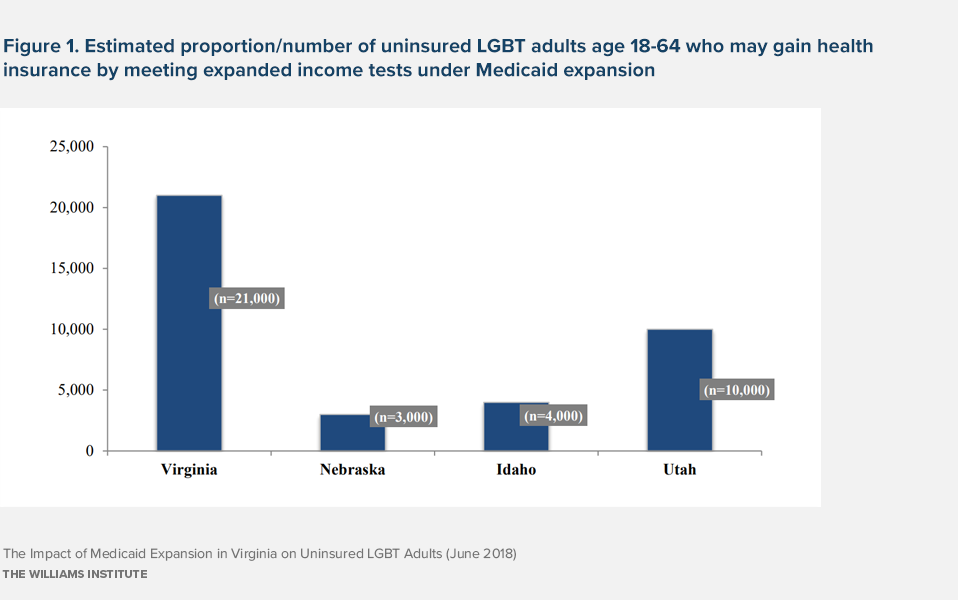Virginia’s decision to expand Medicaid eligibility could make up to 21,000 lesbian, gay, bisexual, and transgender (LGBT) adults (age 18-64) eligible for health insurance. Approximately 42,000 LGBT adults2, 19% of LGBT-identified individuals are currently uninsured. In comparison, approximately 14.5% of non-LGBT adults age 18-64 in Virginia are uninsured (approximately 751,000 uninsured non-LGBT adults). The new Virginia state budget, signed by Governor Ralph Northam on June 7, 2018, incorporated Obamacare Medicaid expansion rules, including expanding Medicaid eligibility to households earning up to 138% of the federal poverty level.Virginia is the 33rd state to adopt these expansion rules; under these rules, an estimated 49.3% of uninsured LGBT Virginians (approximately 21,000), along with 53.4% of uninsured non-LGBT Virginians (approximately 401,000), may now become eligible due to meeting the expanded income requirement.
In addition, voter initiatives to expand Medicaid are expected to appear on the November ballots in three additional states: Nebraska, Idaho, and Utah. Should voters approve expansion in all three states, up to an additional 17,000 LGBT adults age 18 to 64 (and 285,000 additional non-LGBT adults) could potentially gain health insurance through the Medicaid program.
